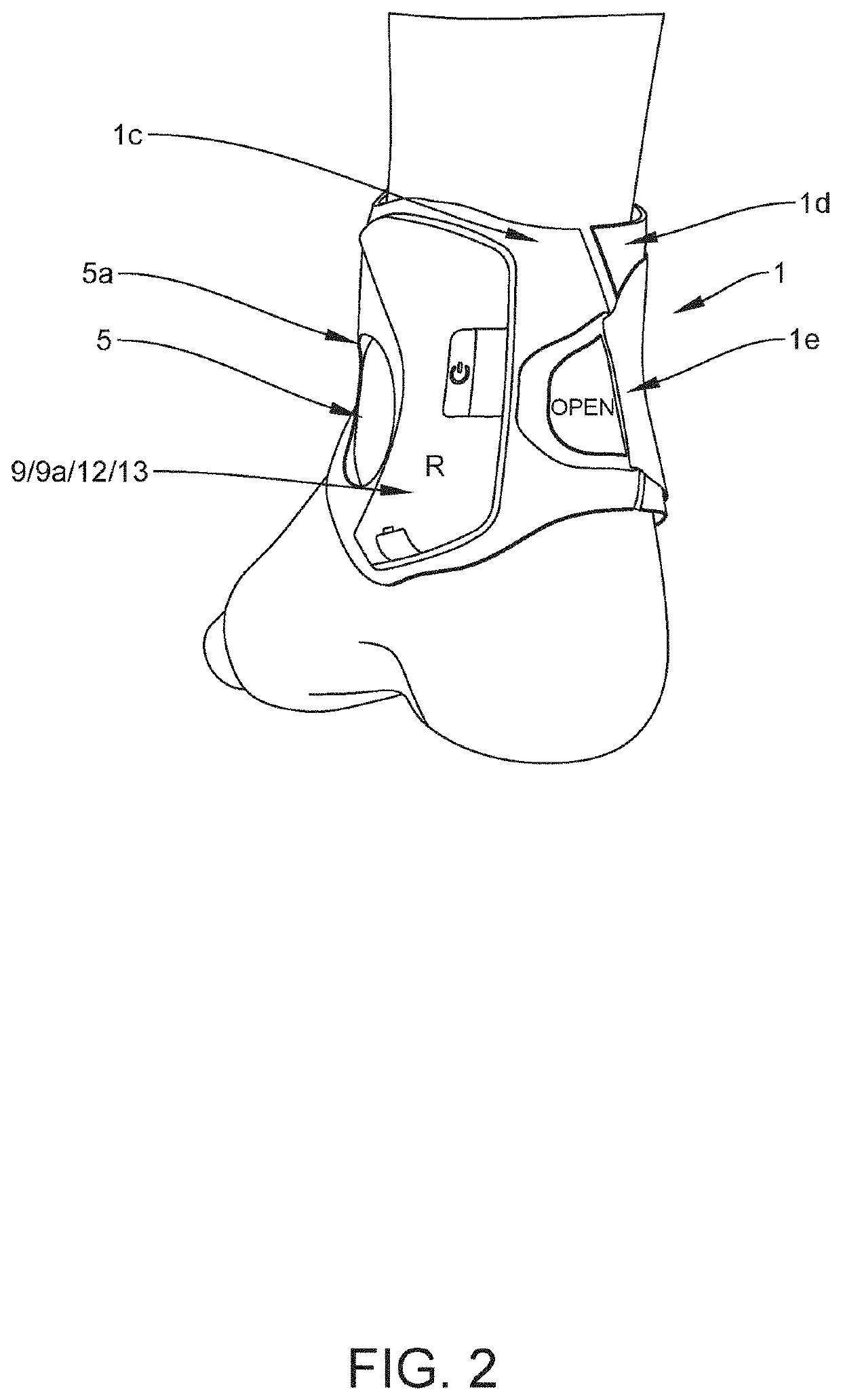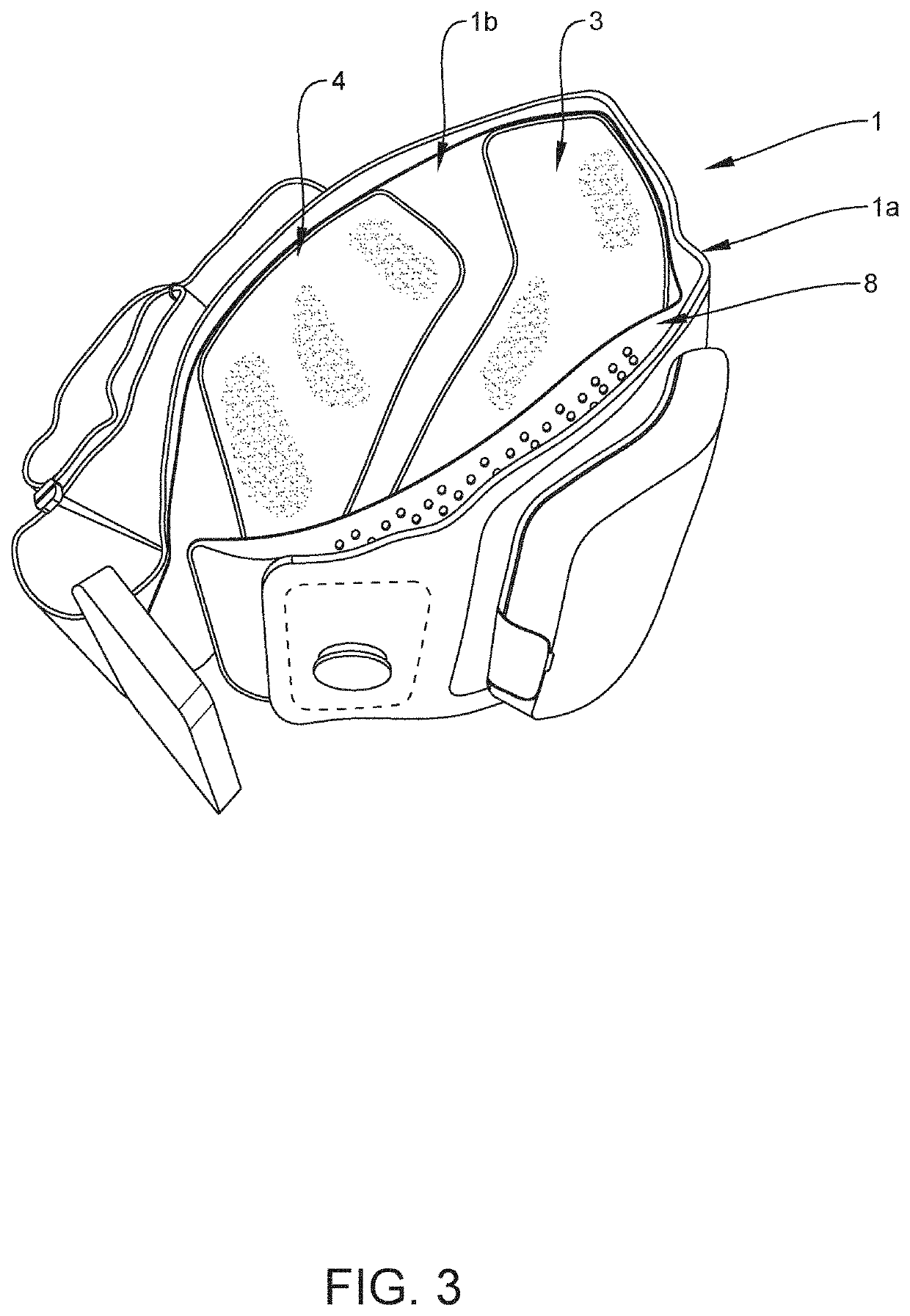An ankle cuff for managing incontinence
a technology of incontinence and ankle cuff, which is applied in the field of ankle cuff, can solve the problems of faecal incontinence, sufferer difficulty in recognising that they need to relieve themselves, and approximately 1 in 20 people suffer faecal incontinen
- Summary
- Abstract
- Description
- Claims
- Application Information
AI Technical Summary
Benefits of technology
Problems solved by technology
Method used
Image
Examples
Embodiment Construction
[0054]Embodiments of the invention described herein relate to an ankle cuff configured to stimulate a patient's posterior tibial nerve for managing urological and gastrointestinal conditions without unwanted sensory and / or motor side effects. Management may include inhibiting, suppressing, down regulating, blocking, preventing or otherwise neuromodulating the activity of the affected neural population.
[0055]The ankle cuff may be used, for example, for managing overactive bladder systems including urgency, incontinence and frequency, mixed urinary incontinence, interstitial cystitis, urinary retention and persistent pelvic pain. Gastrointestinal disorders that can be managed by an ankle cuff as described herein, including faecal incontinence, constipation and irritable bowel syndrome.
[0056]In general terms, an ankle cuff as described herein comprises a body configured to be worn around the ankle of a patient. A first and second electrode array are each located on an inner face of the...
PUM
 Login to View More
Login to View More Abstract
Description
Claims
Application Information
 Login to View More
Login to View More - R&D
- Intellectual Property
- Life Sciences
- Materials
- Tech Scout
- Unparalleled Data Quality
- Higher Quality Content
- 60% Fewer Hallucinations
Browse by: Latest US Patents, China's latest patents, Technical Efficacy Thesaurus, Application Domain, Technology Topic, Popular Technical Reports.
© 2025 PatSnap. All rights reserved.Legal|Privacy policy|Modern Slavery Act Transparency Statement|Sitemap|About US| Contact US: help@patsnap.com



